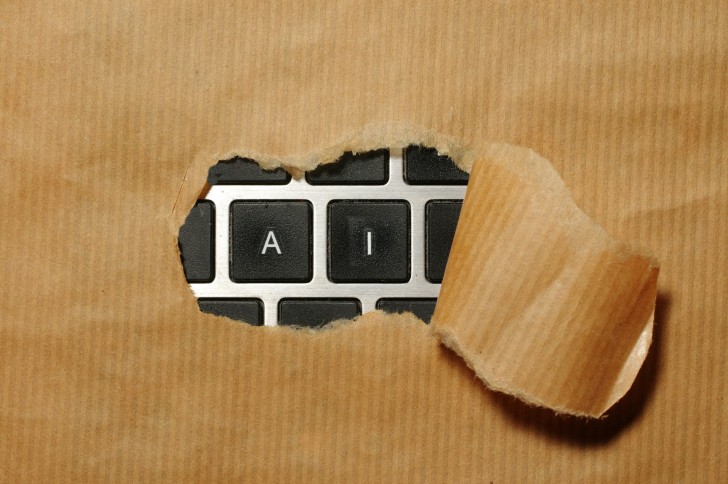Like most organizations, those in the education sector are not ones to shy away from using technologies like AI in their operations. Understandably, considering that AI has a lot of benefits for the sector. That being said, it’s not without its challenges.
I mean, we all know how ChatGPT is used more to cheat than anything.
The question arises: Are the benefits worth the consequences? That’s exactly what I'm here to explore. Together, let’s dive into the pros and cons of this technology and explore how educators can create a balanced future.
The Benefits of AI in Education
The benefits of AI are not limited to one side; both educators and students can use the technology in many useful ways. Let’s take a look at what it offers to both sides.
Teacher’s Assistant
AI can take the form of a digital assistant for teachers, and we all know that teachers could use the help.
If you happen to be a teacher, AI can help you not only automate minor tasks such as grading tests, scheduling sessions, or managing student records, but also in creating useful educational content for improved learning.
This content can include lesson plans, project ideas, activities, or exams, to name a few. All this can allow teachers to focus on more important parts of their role, such as interacting more with students, identifying their needs, and devising solutions to help those who are struggling.
With all that said, you’ll need a fast and reliable internet connection for this, since most AI tools currently use cloud-based servers. If you’re looking for one, I suggest getting one of the high-speed Spectrum plans. You can reach out to the Spectrum customer service for more information.
Personalized Learning
One of the most powerful features of AI is its ability to personalize anything it touches.
You probably know how Netflix shows you more and more of the stuff you like, yeah, that’s AI-powered personalization. When it comes to education, this personalization can be put to good use for helping students.
At the core of this feature are analytics. AI can collect and use data to identify where a certain student is struggling and why. For example, it can analyze a student's strengths, weaknesses, learning pace, style, needs, and preferences.
Using this, it can create personalized learning strategies, content, and even recommend tools that can help. All this can result in a more involved response from students.
Immersive Learning Experiences
If you’re a student, you’ll love this, and if you’re a teacher, your students will love you after this.
Back in my day, our teachers did their best, but since tech wasn’t as advanced as it is today, the learning experience was kind of boring and repetitive, no matter which subject it was. Today, that’s no longer the case.
AI can help turn those in-classroom frowns upside down by making the learning experience much more interactive, immersive, and engaging for students.
For example, teachers can use virtual and augmented reality to simulate real-world historical events and monuments, run virtual science experiments, or use avatars to help students learn a language. They can also add gaming elements such as rewards, challenges, and more to educational material, further increasing the level of engagement and motivation for students.
As amazing as it is, there is a downside to the use of AI in education, and we’re going to explore that next.
The Challenges of AI in Education
Some of the challenges of using AI for education are due to the technology itself, whereas some are on us. Let’s explore the major ones.
Bias Due to Limited Training and Information
AI platforms are trained and have information only to a certain extent, beyond which they can not respond. Anyone using such an AI platform may be subjected to outdated information, misinformation, and bias.
This can tarnish reputation and raise some social concerns.
Let’s say a student uses ChatGPT, or even Google’s new AI responses, to help them with an assignment, and they trust the information without cross-checking it. That screams trouble because both ChatGPT and Google admit that their responses might not always be accurate or up to date, as some ChatGPT models have a knowledge cutoff after November 2023.
Lack of Human Interaction
Social, interpersonal, and communication skills are all very important parts of education, and skills that children need to develop early on for better prospects. Unfortunately, excessive reliance on AI can potentially put all of them at risk.
This is because it can reduce student-to-student and student-to-teacher interactions, reducing the human side of learning.
By interacting with others, children can better learn to voice their opinions, control their emotions, and find reasonable ways to resolve conflicts. Without the development of these skills, they may react negatively in certain situations.
Potential for Misuse
The sad thing is that whenever any new technology pops up, it’s more often misused than proactively used. Remember the ChatGPT example I shared earlier? It’s a clear representation of the potential for misuse that AI brings with it.
By quickly using such tools to write assignments, create videos, and more, students may limit their creativity and critical thinking, and might not gain any practical knowledge. This could put them in a tough situation when it comes to landing a job.
Even if they land a job, they might find themselves struggling to deliver upon what is expected.
AI in Education – How to Successfully Implement It?
The key to the successful implementation of AI for education lies in careful planning, solid infrastructure, and constant monitoring. Governments and educational institutions must collaborate to devise policies that guide where the technology can be useful and where it can be harmful.
Teachers and students should first be made aware of AI, and support must be offered to schools in developing an infrastructure to support its use. With these steps, we can utilize the full potential of the technology for good.
 Editorial staff
Editorial staff

 Editorial staff
Editorial staff


